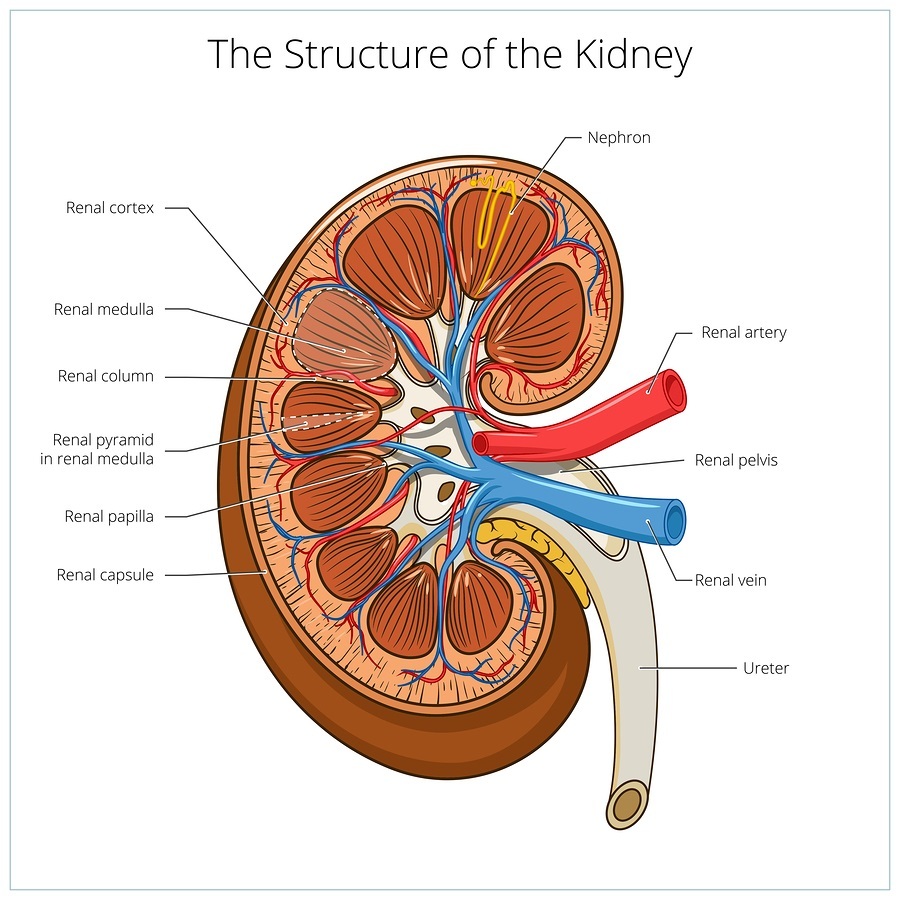Urinary stone disease
Data: 2.03.2018 / Rating: 4.7 / Views: 761Gallery of Video:
Gallery of Images:
Urinary stone disease
ii Urinary Composition and stone formation Masters degree 2010, by Mohammad Ali Shafiee, University of Toronto ABSTRACT Background: Kidney stone disease is a common and often debilitating disorder, yet its pathophysiology is poorly understood Urinary Stone Disease (USD) is an important health care problem affecting both adults and children, causing pain and suffering for the patient and a financial burden to the Nation. One in 11 Americans now has USD, and the prevalence is increasing. According to the NIDDKfunded study, Urological. The Urinary Stone Disease Research Network (USDRN) is a group of scientists and investigators designing and conducting research on urinary stones (kidney stones) in adults and children in order to learn more about. who forms kidney stones, what are the best treatments. Urinary calculi, solid particles in the kidneys, bladder, or ureter, are of various chemical compositions calcium oxalate, calcium phosphate, uric acid, cystine, and struvite. URINARY STONE DISEASE THE PRACTICAL GUIDE TO MEDICAL AND SURGICAL MANAGEMENT Edited by MARSHALL L. MENG, MD Department of Urology University of California, San Francisco, School of Medicine San Francisco, CA URINARY STONE DISEASE THE PRACTICAL GUIDE TO MEDICAL AND SURGICAL MANAGEMENT Edited by MARSHALL L. MENG, MD Department of Urology University of California, San Francisco. urinary stone disease need medicines to prevent stones from forming. The kidney stone begins in the center of the kidney as a tiny particle. we are having the perfect treatment for urinary stone disease Urinary protein levels are not routinely measured in stone patients while there is strong evidence that proteins play a role in the etiology of stones. The purpose of this study is to examine the urinary and serum proteins of stone formers compared to healthy subjects utilizing the high throughput. CT can locate a stone and also indicate the degree to which the stone is blocking the urinary tract. CT can also detect many other disorders that can cause pain similar to the pain caused by stones. From developing new therapies that treat and prevent disease to helping people in need, we are committed to improving health and wellbeing. The Division of Urology at UNM delivers comprehensive treatment of urinary stone disease. We provide services at both UNMH and SRMC. Urinary stone disease is a wellknown common problem in our country, affecting 10 to 15 of the population. Drugs for Urinary Stone Disease Bumetanide This medication is a diuretic, prescribed for the treatment of swelling and fluid retention due to congestive heart failure. Peacock M, Robertson WG, Heyburn PJ, Rutherford A. Patients suffering from urinary stone are traditionally referred to a surgeon. Most are investigated only as far as establishing the site of the stone and its effect on renal function. Although a number of patients may require surgery, the majority. Renal stone disease (urolithiasis, nephrolithiasis) covers many conditions causing kidney, ureteric or bladder stones. These include metabolic and inherited disorders, anatomical defects of the upper or lower urinary tract, and chronic urinary infection. Understanding Kidney Stone Disease Welcome Stone disease is a painful and common condition that affects more than 5 of all adults in the US. 1 Its estimated that nearly 2 million patients visit their doctors or local emergency rooms because of kidney stones every year. 2 Urinary tract stone disease symptoms, causes, diagnosis, and treatment information for Urinary tract stone disease (Kidney stones) with alternative diagnoses, fulltext book chapters, misdiagnosis, research treatments, prevention, and prognosis. In addition, some symptoms of a bladder stone are similar to symptoms of other diseases and conditions, such as urinary tract infection. For more information about disease and conditions that can mimic bladder stones, refer to misdiagnosis of bladder stones. The etiology of stone disease remains unknown despite the major technological advances in the treatment of urinary calculi. Clinically, urologists have relied on 24h urine collections for the last 3040 years to help direct medical therapy in hopes of reducing stone recurrence; yet little progress has been made in preventing stone disease. NIH Funding Opportunities and Notices in the NIH Guide for Grants and Contracts: Urinary Stone Disease Research Network: Clinical Centers (USDRNCCs) (Collaborative. Urate stones can grow so large that they block the urinary pathway, which is a serious condition. Some stoneforming Dalmatians live their lives happily without ever showing any symptoms of urinary stone disease. is a common disease that affects 1 in 11 people in the United States. Urinary tract stone disease is likely caused by two basic phenomena. The first phenomenon is supersaturation of the urine by stoneforming constituents, including calcium, oxalate, and uric acid. Background: The prevalence of urinary stone disease (USD) and asthma is rising and has recently been associated in a pediatric population. Objective: To investigate the association between asthma and USD in a nationally representative adult population. Design, Setting, And Participants: We analyzed the National Health and Nutrition Examination Survey, a US populationbased cross. Urinary tract stone disease is a common problem in Australia. They tend to occur more commonly in the warmer months of the year. Stones form in the kidneys and can cause symptoms if they block the urinary tract and obstruct the flow of urine. The medical term for this condition is nephrolithiasis, or renal stone disease. The kidneys filter waste products from the blood and add them to the urine that the kidneys produce. When waste materials in the urine do not dissolve completely, crystals and kidney stones may form. home kidney stones in adults center kidney stones in adults article Kidney Stones in Adults. Introduction to the urinary tract; What is a kidney stone? Other frequently used terms are urinary tract stone disease and nephrolithiasis. Doctors also use terms that describe the location of the stone in the urinary tract. Urinary tract stone disease is the direct reason of ESRD in 3. Coronary heart disease risk factors, such as obesity, hypertension, hyperuricemia, dyslipidemia and CKD, were related with urinary stone disease. If you have a small stone that easily passes through your urinary tract, you may not have symptoms at all. Diagnosis Health care professionals use your medical history, a physical exam, and tests to diagnose kidney stones. The vast majority of urinary stones present with the acute onset of pain due to acute obstruction and distention of the upper urinary tract. The severity and location of the pain can vary from patient to patient due to stone size, stone location, degree of obstruction, acuity of obstruction, and variation in individual anatomy (eg, intrarenal versus extrarenal pelvis). Request PDF on ResearchGate Urinary Stone Disease in Turkey: An Updated Epidemiological Study In a nationwide survey conducted in 14 provinces on 1, 500 individuals, an overall prevalence of 14. Presentation for the pathogenesis, evaluation and treatmentof kidney and urinary stones What are kidney stones? A kidney stone is a piece of solid material that forms in the kidney when minerals in the urine become very concentrated. Small stones often pass through the body with little discomfort, but larger stones can be very painful and even block the urinary tract. Kidney stones are more common in adults, but they can also occur in children of any age. Urinary Stone Disease Presentation. Most urinary stones pass through the collecting system in an uneventful fashion. When a ureteral stone becomes obstructed it can result in severe pain with associated nausea and vomiting. Urinary stone disease has afflicted mankind for centuries and continues to be a significant medical ailment throughout the world. Contemporary management reflects the changes and evolution that have occurred in both medicine and, specifically, urology. Traditional open surgery has been nearly Urinary stone disease may result in significant morbidity and possible mortality in the presence of obstruction, especially with concurrent infection. A patient with obstructive urinary calculi with fever and infected urine requires emergent drainage. When urinary chemicals become out of balance, they can form a group of crystals called a stone that can block the urinary passage. Kidney stones are clumps of mineral that accumulate on the inner lining of the kidneys. Medical conditions such as Crohn's disease, urinary tract infections, Vitamin D and kidney stone. Urinary stones affect one in 10 Australians. The majority of stones pass spontaneously, but some conditions, particularly ongoing pain, renal impairment and infection, mandate intervention. The assessment of acute stone disease should determine the location, number and. Urinary Tract Stones Urolithiasis. Authored by Dr Roger Henderson, Reviewed by Dr Adrian Bonsall on 04 Jun 2015. This article is for Medical Professionals. Macneil F, Bariol S; Urinary stone disease assessment and management. Prevalence of Urinary Stone Disease in Men. Other Dietary Factors Influencing Urinary StoneFormation Urinary stone disease (USD) is an important healthcare problem in the US affecting both adults and children, and costs 10 billion to the nation. Urinary Stone Disease What are kidney stones? A kidney stone is a piece of solid material that forms in the kidney when minerals in the urine become very concentrated. Most patients with urinary stones have microscopic haematuria detected by routine urine analysis. An absence of red cells in the urine suggests an alternative diagnosis. # # # # Presenting features of urinary stone disease An x ray film of the kidneys, ureters, and bladder shows the position and size of the kidneys as well as the presence of any calculi, which usually obstruct at the. Urinary Stone Disease What are kidney stones? A kidney stone is a piece of solid material that forms in the kidney when minerals in the urine become very concentrated. Endourology and Urinary Stone Disease. Endourology is a minimally invasive technique available to treat kidney stones. Stones may be extracted or fragmented using tiny instruments through natural body channels such as the urethra, bladder and ureter. In addition to treatment, our doctors help determine the cause of kidney. U INTRODUCTION Urinary calculi are the third most common affliction of the urinary tract, exceeded only by NIH Funding Opportunities and Notices in the NIH Guide for Grants and Contracts: Urinary Stone Disease Research Network: Scientific Data Research Center (USDRNSDRC) (Collaborative U01) RFADK. NIDDK
Related Images:
- Witches of east end s01e01 mp4
- Young and Beautiful 2013
- My day in rome x art
- Dvd supernatural season 5 dvd 1
- True Detective S01E08
- The devil in me 2012
- This is 40 aac
- El cartel de los sapos
- Game of thrones s01e08 hdtv
- La carica dei 101 ita
- Nes rom pack
- The office us s09e22
- Mad men s05 hdtv
- Walt disney short
- Tng season 6
- The game s02
- The yes men fix the world
- Like a rolling stone
- Dark souls 2
- Teenage dream katy perry itunes
- Fun the system
- The secret armory of general knoxx
- Euro truck 3 simulator
- Secrets of the vatican
- Lenny kravitz believe in me
- Windows 81 updated
- Microsoft office activator windows 8
- Kiesza Giant In My Heart
- Gears of war 2 xbox
- How i met your mother s09e15
- Transformers age of extinction hindi
- Without a paddle 2004
- Times like these
- We steal secrets the story of wikileaks
- Psp god of war iso
- The gf network
- Reign of fire
- Tvj tough hits
- Shark bait dvdrip
- Daughter if you
- Need for Speed The Run 2011
- 500 greatest rolling
- Avengers assemble s02
- Switched At Birth S03E01
- Coldplay a rush of blood
- The Last Ship S01E07
- Full metal jacket french
- Rise guardians french
- Nikita french s03
- Superior spider man
- Gundam wing ost
- Joe bonamassa different shades of blue
- Corel VideoStudio Pro
- Destination truth alien
- The walking 4
- The wind that shakes the barley nl subs
- Dts bluworld x264
- Green day the studio albums 19902009
- Back to the future 1985 1080p
- Sigma feat Paloma Faith Changing
- Tom cruise italian
- Black hawk down team sabre
- The man samuel l jackson
- Erasure light world
- Ice pirates 1984
- Party mix 2011
- The elder scrolls
- Iron man trilogy
- King of queens season 2
- 1080p last man standing












